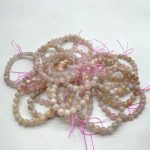Introduction
Amethyst, a captivating gemstone renowned for its enchanting purple hues, has captivated humanity for centuries. Its allure transcends mere aesthetics, as it holds a rich history, cultural significance, and monetary value. Delve into the multifaceted world of amethyst worth, uncovering the factors that influence its price and exploring its myriad applications.

Factors Influencing Amethyst Worth
Quality
The quality of an amethyst is paramount in determining its worth. Key factors include:
- Color: The most valuable amethysts exhibit deep, saturated purple hues.
- Clarity: Gemstones with minimal inclusions (imperfections) are more desirable.
- Cut: Precision cutting enhances an amethyst’s brilliance and symmetry, increasing its value.
Size
Larger amethysts naturally command a higher price, as they require more time and resources to mine and cut. Weight is measured in carats, with one carat equaling 200 milligrams.
Treatment
Amethysts may undergo various treatments to enhance their appearance. Heat treatment can darken their color, while irradiation can intensify it. Treated gemstones are typically less valuable than natural ones.
Origin
The source of an amethyst can impact its worth. Amethysts from Brazil, Zambia, and Madagascar are highly prized for their exceptional color and clarity.
Amethyst Worth in the Market
The value of amethysts varies considerably depending on their quality and market demand. Gemological laboratories issue certificates that assess the quality of gemstones, providing a reliable basis for pricing. The following table provides an approximate estimate of amethyst prices based on carat weight and quality:
| Carat Weight | Quality | Approximate Price |
|---|---|---|
| 1-2 Carats | Good | $50-$150 |
| 3-5 Carats | Very Good | $150-$350 |
| 5-10 Carats | Excellent | $350-$750 |
| 10+ Carats | Exceptional | $750+ |
Amethyst Applications
Jewelry
Amethyst is widely used in jewelry, adorning rings, pendants, earrings, and necklaces. Its versatility allows it to complement both classic and contemporary designs.
Healing and Spirituality
Amethyst has long been associated with spiritual and healing properties. It is believed to promote calmness, clarity, and spiritual growth.
Art and Decoration
Amethyst’s beauty extends beyond personal adornment. It is incorporated into sculptures, home décor, and other artistic creations, adding a touch of elegance and sophistication.
Industrial Applications
The piezoelectric properties of amethyst make it useful in sound amplification devices, watches, and other electronic applications.
Customer Insights
Understanding the wants and needs of customers is essential for determining the value of amethysts. Consider the following questions:
- What is your desired color intensity?
- What size and shape will best suit your purpose?
- Do you prefer natural or treated gemstones?
- How important is the origin of the amethyst to you?
- What is your budget range?
Conclusion
The worth of an amethyst extends beyond its monetary value. Its beauty, historical significance, and spiritual properties make it a treasured gemstone. By understanding the factors that influence its price and delving into its myriad applications, you can make an informed decision when acquiring this captivating gemstone.




























